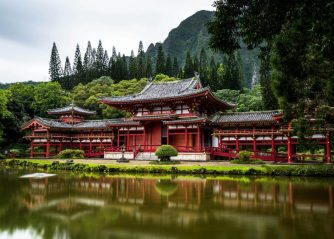Japan: The Land of Tradition and Innovation

Introduction:
Japan, an island nation in East Asia, is a captivating blend of rich history, vibrant culture, and cutting-edge technology. For those intrigued by the Land of the Rising Sun, there is a wealth of information to discover. In this article, we will delve into the fascinating aspects of Japan, providing a comprehensive overview for those interested in this enchanting country.
Historical Evolution of Japan:

From its ancient origins to its modern-day prominence, Japan’s history is a captivating narrative of power struggles, cultural transitions, and technological advancements. Let us explore the key milestones that have shaped this island nation:
1. Ancient Japan:
– The Jomon period (10,000 BCE – 300 BCE): Characterized by a hunter-gatherer lifestyle and the creation of intricate pottery.
– The Yayoi period (300 BCE – 300 CE): Marked by the introduction of agriculture, metalworking, and the establishment of social hierarchies.
– The Asuka period (538 CE – 710 CE): Witnessed the adoption of Buddhism, the establishment of a centralized government, and the construction of grand Buddhist temples.
2. Feudal Japan:
– The Heian period (794 CE – 1185 CE): Known for its flourishing art, literature (such as “The Tale of Genji”), and the rise of the samurai class.
– The Kamakura period (1185 CE – 1333 CE): Saw the emergence of the warrior-led Kamakura shogunate and the Mongol invasions.
– The Muromachi period (1336 CE – 1573 CE): Witnessed the dominance of the Ashikaga shogunate and the flourishing of Zen Buddhism.
3. Edo Period and Western Influence:
– The Edo period (1603 CE – 1868 CE): Brought about stability under the Tokugawa shogunate, isolationist policies, and the rise of the merchant class.
– The Meiji Restoration (1868 CE): Marked the end of the samurai era and the beginning of Japan’s rapid modernization and Westernization.
– The Showa period (1926 CE – 1989 CE): Defined by Japan’s militaristic expansion, its devastating involvement in World War II, and subsequent post-war reconstruction.
4. Modern Japan:
– Post-war Reconstruction: Following the end of World War II, Japan underwent an impressive transformation from a war-torn nation to an economic powerhouse through its commitment to technological innovation and industrial production.
– Contemporary Japan: Japan has cemented its reputation as a global leader in technological advancements, including robotics, automotive engineering, and consumer electronics.
Exploring Japan’s Cultural Highlights:
Japan’s culture is as diverse and enchanting as its history. Here are some key highlights:
1. Traditional Arts and Crafts:
– Ikebana: Learn the art of Japanese flower arrangement, emphasizing harmony, balance, and the appreciation of natural beauty.
– Tea Ceremony: Immerse yourself in the art of tea preparation and its deep-rooted connection to Zen Buddhism.
– Shodo: Discover the elegance of Japanese calligraphy, the skill of transforming written characters into visually appealing art forms.
2. Cuisine:
– Sushi: Indulge in the delicate flavors of fresh fish and vinegared rice, prepared with meticulous attention to detail.
– Ramen: Savor steaming bowls of noodles served in flavorful broths, a comfort food loved by locals and visitors alike.
– Tempura: Delight in lightly battered and deep-fried seafood and vegetables, creating a crispy and delectable culinary experience.
3. Traditional Festivals:
– Cherry Blossom Festival: Witness the breathtaking spectacle of cherry blossoms in full bloom, accompanied by lively celebrations and picnics beneath the sakura trees.
– Gion Matsuri: Experience the vibrant floats and processions during Kyoto’s renowned summer festival, celebrating traditional arts and culture.
Enhancing Your Trip to Japan:
1. Language:
– Learning Basic Japanese Phrases:
– Konnichiwa (Hello)
– Arigatou gozaimasu (Thank you)
– Sumimasen (Excuse me)
– Utilizing Translation Tools:
– Download translation apps or carry pocket-sized phrasebooks to aid communication.
2. Etiquette:
– Bowing: Familiarize yourself with the different bowing customs, as it is an essential part of Japanese etiquette.
– Gift-giving: Be prepared to offer small gifts, such as omiyage, as an expression of gratitude or to show respect.
Conclusion:
Japan’s allure is undeniable, with its rich history, captivating culture, and technological advancements. By understanding its historical evolution, embracing its cultural highlights, and appreciating its unique traditions, travelers and adventurers can embark on a journey that promises unforgettable experiences. Whether immersing oneself in ancient traditions or embracing the nation’s cutting-edge innovations, Japan offers a harmonious blend of tradition and innovation. So, let Japan beckon you to explore its captivating wonders.
















































